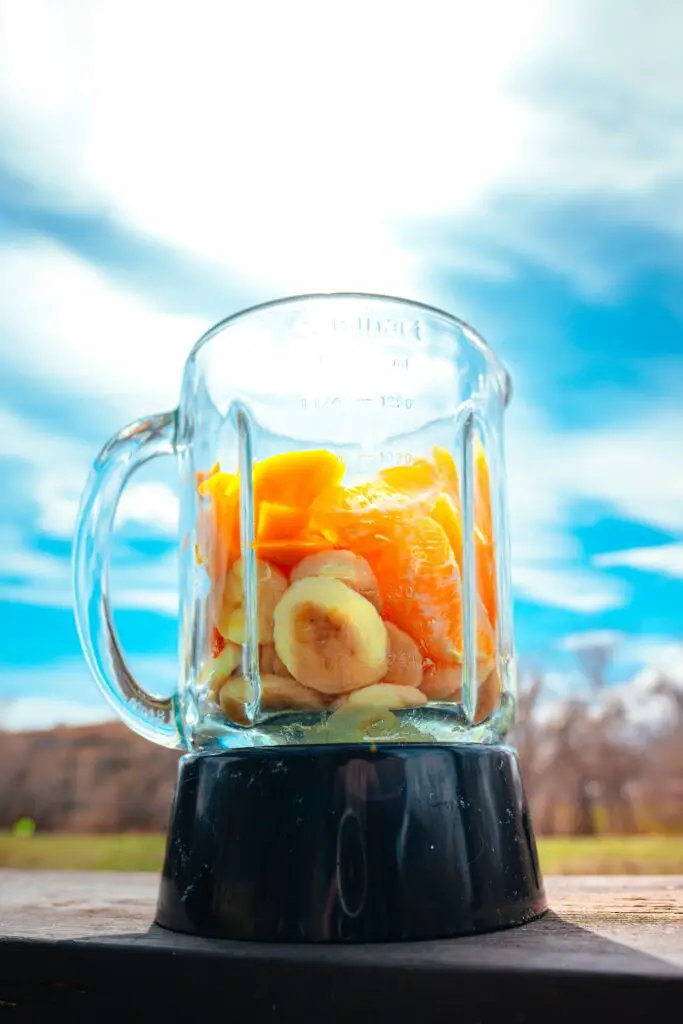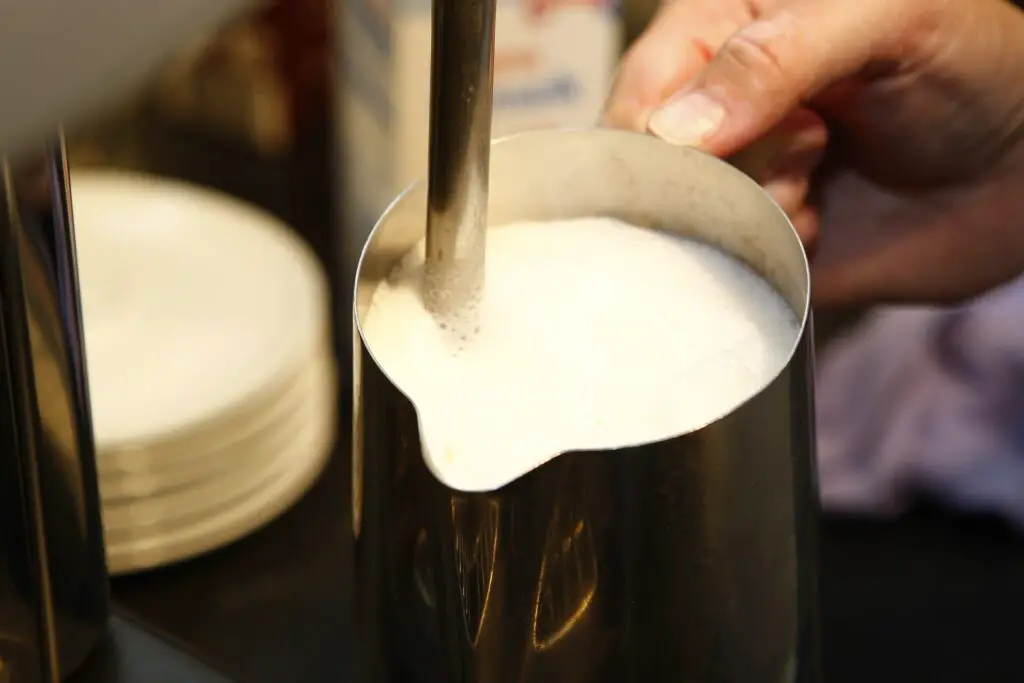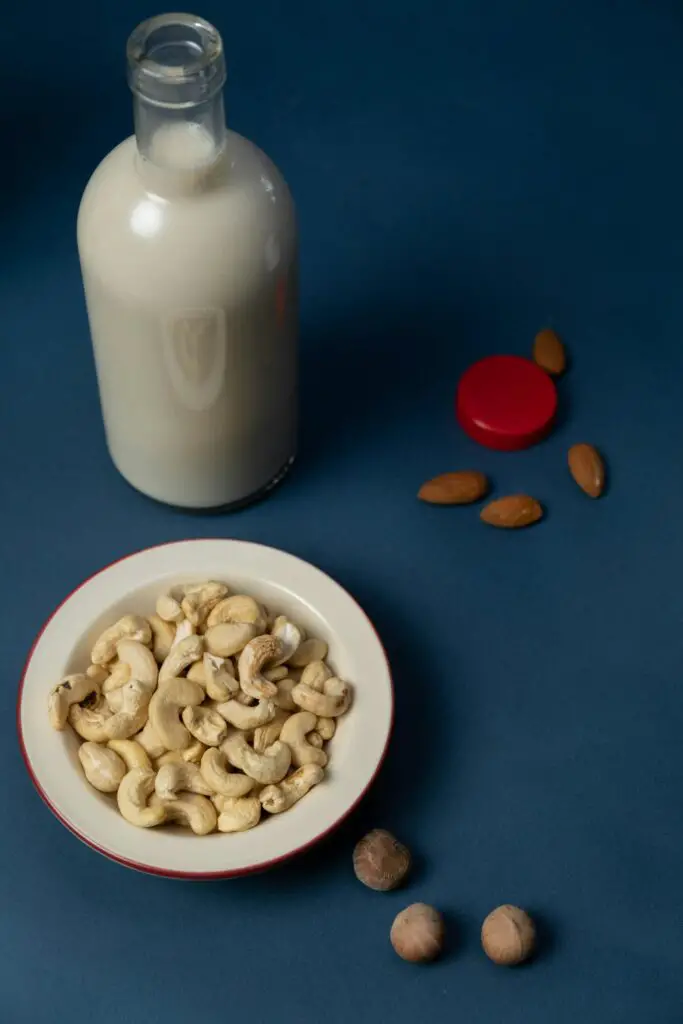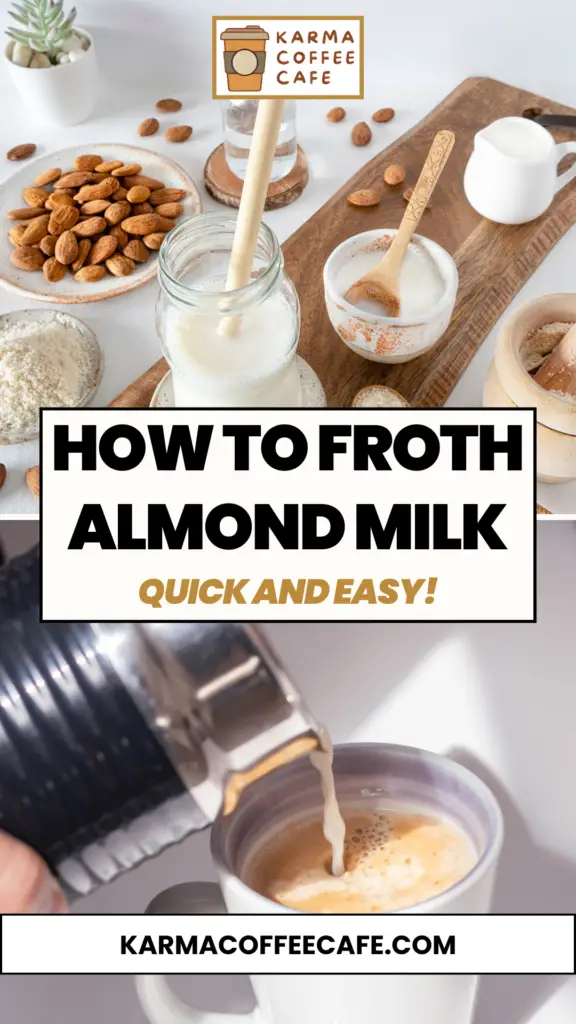If you’re a fan of lattes, cappuccinos, or other frothy delights, you might have wondered, “Can you froth almond milk?” As more people seek dairy-free alternatives, almond milk has risen in popularity.
But achieving that perfect froth with almond milk can be a bit of a mystery.
So, yes, you can froth almond milk, but it requires a bit of finesse.
In this blog post, we’ll delve into the art of frothing almond milk, exploring tips, techniques, and the best tools to create a luscious foam that rivals your favorite coffee shop beverages.

What Exactly Is Almond Milk?

Almond milk is a delightful plant-based milk substitute crafted from almonds and has gained widespread popularity as a favored alternative to cow’s milk.
Its rise in demand is attributed to various factors, including lactose intolerance and vegan dietary preferences.
One of its defining characteristics is its light and pleasing flavor, setting it apart from other plant-based milk options.
Almond milk can be used as an alternative to dairy milk in coffee, oatmeal, or baking recipes.
Beyond its delightful taste, almond milk is also recognized for being a rich source of vitamin E, which contributes to bolstering the immune system and maintaining healthy blood vessels.
In the United States, it remained a niche health food item until the early 2000s, when its popularity began to grow.
Can You Froth Almond Milk?

Yes, you can froth almond milk, but achieving the perfect froth requires finesse and attention to detail.
Frothing almond milk is a slightly more intricate process compared to regular dairy milk, but fear not – with the right technique and tools, you can create a velvety foam that rivals traditional froths.
When attempting to froth almond milk, it’s essential to start with fresh almond milk, as it froths better than older batches.
The optimal frothing temperature for almond milk is around 150°F, slightly higher than the 140°F typically used for dairy milk.
Furthermore, the quality of almond milk matters; investing in a good brand ensures a higher almond content and less water, resulting in a better froth suitable for coffee drinks.
To make the process smoother, consider using a milk frother specifically designed for this task.
Such frothers are tailored to handle almond milk’s unique characteristics, simplifying the frothing process.
However, if you don’t have a milk frother, don’t worry – there are alternative methods we’ll explore in the following section to help you achieve the perfect almond milk froth for your favorite beverages.
How Froth Almond Milk: Here Are A Few Different Ways
Frothing almond milk opens up a world of delightful possibilities for your favorite beverages.
Whether you have a specialized frother or common kitchen tools, here are several methods to achieve that perfect froth:
Using a Frother

A frother is an efficient and dedicated tool for frothing almond milk.
Warm the almond milk on the stove or in the microwave.
Once warm, pour it into the frother and let it work its magic until your desired frothy consistency is reached.
Ensure the frother is specifically designed for dairy-free milk, as almond milk’s fat content differs from that of dairy milk.
Using a Steam Wand

If you own an espresso machine with a steam wand, this method works wonders.
Pour cold almond milk into a pitcher and position the steam wand just below the milk’s surface.
Turn it on and create a gentle vortex by moving the pitcher in a circular motion.
This will introduce air into the milk and create froth.
Once you achieve the desired temperature and frothiness, turn off the steam wand.
Using a French Press

A French press can create velvety microfoam like those found in coffee shops’ lattes.
Begin by heating the almond milk until warm, then pour it into the French press.
Pump the plunger up and down until the milk doubles in volume, creating a beautiful froth.
Using a Blender

For a method that generates plenty of foam, pour cold almond milk into a blender and blend it on high speed for about 30 seconds.
Leave enough room in the blender for the milk to expand during blending.
Using a Whisk

A whisk can be a simple yet effective tool for frothing almond milk.
Warm the almond milk and pour it into a mixing bowl, leaving enough space for expansion.
Whisk vigorously to incorporate air into the milk, stopping when you achieve your desired foaminess.
Shaking it in a Jar

In this easy, arm workout method, pour warmed almond milk into a jar, leaving room for expansion.
Close the jar tightly and shake it vigorously until the milk almost doubles in size.
Microwave the milk for 30 seconds after shaking to stabilize the foam and create a smooth texture.
Important To Note
Different brands and types of almond milk froth differently, so it may take some experimentation to find the best method for your preferred brand.
Additionally, be sure to use cold almond milk straight from the fridge, and froth in short bursts to prevent the milk from overheating and curdling.
Understanding Milk Frothing

Milk frothing is a technique that aerates milk to create a delightful, foamy texture often used to enhance coffee drinks like cappuccinos and lattes.
The process involves incorporating air into the milk’s chemical composition, resulting in the airy and light consistency known as frothed or foamed milk.
Milk is composed of proteins, fats, and carbohydrates, with fats and proteins playing a key role in determining the thickness and flavor of the foam.
Variations in milk type can influence the froth’s characteristics.
For instance, milk with higher fat and protein content, like whole milk, produces a richer and thicker texture in the foam.
However, as previously mentioned, almond milk can also be successfully used for frothing, providing an alternative for those seeking a dairy-free option.
Frothing Unsweetened Almond Milk?

Yes, unsweetened almond milk can be frothed to perfection, making it an excellent choice for adding creamy frothiness to your favorite beverages.
Unsweetened almond milk contains no added sugars, providing a blank canvas for frothing, resulting in a creamier and more velvety texture that enhances the overall taste of your drinks.
Additionally, unsweetened almond milk typically contains a higher protein content compared to sweetened varieties.
This higher protein level contributes to creating a stable and voluminous froth, ensuring your frothed almond milk maintains its structure.
For the best frothing results, opt for high-fat almond milk, such as the delicious vanilla-flavored option.
The increased fat content not only elevates the texture of the froth but also brings a rich and enjoyable taste akin to traditional dairy froths.
Can You Froth Cashew Milk?

Frothing cashew milk can present challenges due to its naturally thin consistency.
Unlike almond milk, cashew milk tends to froth poorly, barely creating any bubbles, and often remaining too thin and watery for a satisfying froth.
While cashews make creamy milk, cashew milk surprisingly froths second best to almond creamer.
As a result, attempting to froth cashew milk may not yield the desired results.
However, if you’re determined to try frothing cashew milk, there are alternative techniques to explore.
Experimenting with different frothing methods, such as using a French press, mason jar, or immersion blender, may help you achieve a modest froth despite its thinness.
Keep in mind that cashew milk’s thin consistency might limit its frothing potential compared to other milk alternatives like almond milk or oat milk.
Despite the challenges, exploring different frothing techniques can still offer an opportunity to enjoy a unique and frothy touch to your coffee or favorite beverages.
Versatile Uses of Frothed Almond Milk
Frothed almond milk adds a delightful and versatile touch to various drinks and dishes.
Here are some creative ways to use frothed almond milk:
Coffee Drinks

Frothed almond milk serves as a fantastic dairy-free alternative to regular milk in coffee drinks like cappuccinos and lattes.
Look for almond milk brands explicitly designed for frothing, often labeled as “barista almond milk,” for the best results.
Tea

Try frothed almond milk in tea, such as chai tea lattes, to create a creamy and comforting beverage.
Smoothies

Add frothed almond milk to smoothies for a creamy texture and a boost of nutty flavor, enhancing your favorite fruit blends.
Baking

Substitute frothed almond milk for regular milk in baking recipes, such as muffins and cakes, for a dairy-free twist while maintaining a soft and moist texture.
Desserts

Top off desserts like hot chocolate and pudding with frothed almond milk for an added creamy indulgence that complements the sweetness.
Essential Tips for Frothing Almond Milk
Frothing almond milk to perfection requires finesse and attention to detail.
Here are some expert tips to elevate your frothing game:

Choose Fresh Almond Milk with High Fat Content
Opt for fresh almond milk with a high-fat content to achieve a rich and creamy froth.
The fats in almond milk contribute to the froth’s texture, resulting in a luscious and velvety finish.
Achieve the Ideal Temperature
Heating almond milk to the right temperature is crucial for successful frothing.
The sweet spot is around 150°F (approximately 65°C).
Avoid overheating the milk, as this can lead to its breakdown and produce less desirable frothing results.
Use Suitable Equipment
There are various methods to froth almond milk at home, including using a frother, a saucepan, a microwave, or an espresso machine.
Choose the equipment that suits your preferences and resources, ensuring the best frothing experience.
Froth Slowly and Steadily
Froth the almond milk slowly and steadily, allowing air to incorporate evenly throughout the liquid.
This technique promotes a smooth and creamy texture in the froth, enhancing the overall frothing outcome.
Embrace Experimentation
Frothing almond milk can present some challenges, but don’t hesitate to experiment with different techniques and equipment to find what works best for you.
With practice, you’ll uncover the perfect approach to achieve a delightful froth that rivals your favorite coffee shop beverages.
How healthy is almond milk?
Almond milk is a nutritious and versatile plant-based beverage that offers several health benefits.
Here’s an overview of its nutritional profile and some considerations:

Low-Calorie and Dairy-Free
Almond milk is naturally dairy- and lactose-free, making it an excellent alternative for individuals with lactose intolerance or those avoiding dairy products.
With only 39 calories per cup, it is a low-calorie option compared to cow’s milk and other plant-based beverages.
Rich in Vitamin E and Nutrients
Almond milk is a good source of vitamin E, a crucial antioxidant that supports the immune system and maintains healthy blood vessels.
Additionally, it contains essential nutrients such as calcium, riboflavin, and vitamin D, contributing to overall nutritional value.
Antioxidant Content
Almond milk contains antioxidants that help protect the body from harmful free radicals, supporting overall well-being.
Potential LDL Cholesterol Lowering Effect
Some studies suggest that almond milk may have a positive impact on reducing LDL cholesterol levels, benefiting heart health.
Drawbacks and Considerations
While almond milk has numerous health benefits, there are a few drawbacks to consider.
It is usually low in protein, so individuals seeking to increase protein intake may need to explore alternative options.
Additionally, those with tree nut allergies should avoid almond milk to prevent any adverse reactions.
Conclusion
The answer is a resounding “Yes, you can froth almond milk!” While frothing almond milk may require a bit of finesse and experimentation, it’s entirely possible with the right technique and equipment.
Opt for fresh almond milk with high-fat content, heat it to the ideal temperature of 150°F, and froth it slowly and steadily to achieve a creamy and velvety texture.
Embrace the versatility of frothed almond milk in coffee drinks, tea, smoothies, baking, and desserts, adding a deliciously nutty touch to your favorite beverages and culinary creations.
So, unleash your inner barista and savor the frothy goodness of almond milk in your homemade delights!


